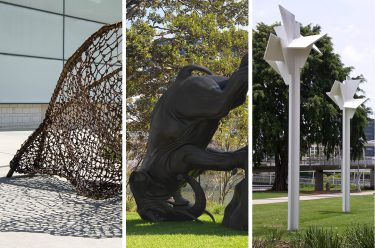The Queensland Art Gallery’s (QAG) permanent home at South Brisbane since 1982 was designed around the Brisbane River, and the spectacular Watermall within its cavernous interior runs parallel to the waterway threading its way through the ‘River City’.
Watermall
On entering the Queensland Art Gallery, the grand Watermall is one of the most striking exhibition spaces first viewed, either from above at the Melbourne Street entry or a surprise feature from the Stanley Place entrance. As well as giving a sub-tropical character to the building, it’s a visitor favourite for both tourists and regular art lovers.
The water provides both a physical connection and serves as a parallel reflection of the Brisbane river, a perfect and unique backdrop for a range of memorable installations and permanent sculptures. This central water feature is lit through hidden domes in the ceiling above that filter out the sun’s glare, bathing artwork in a soft natural light.
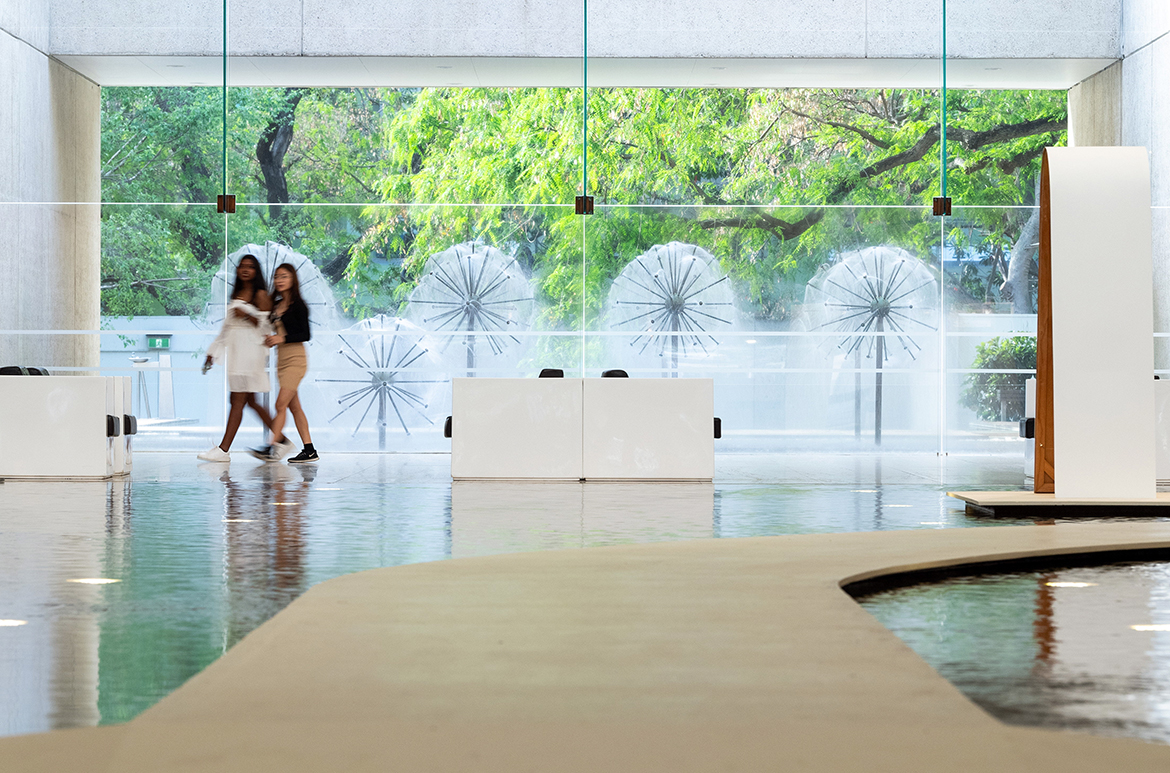
What is your favourite Watermall installation?
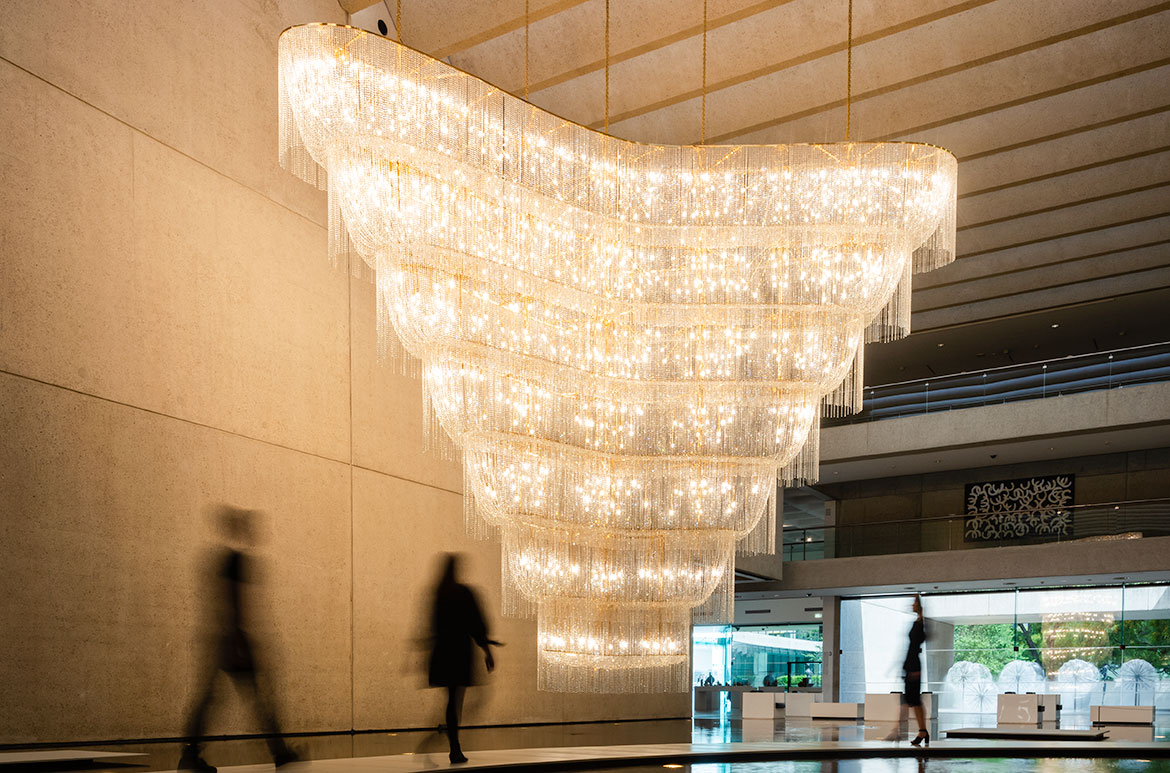
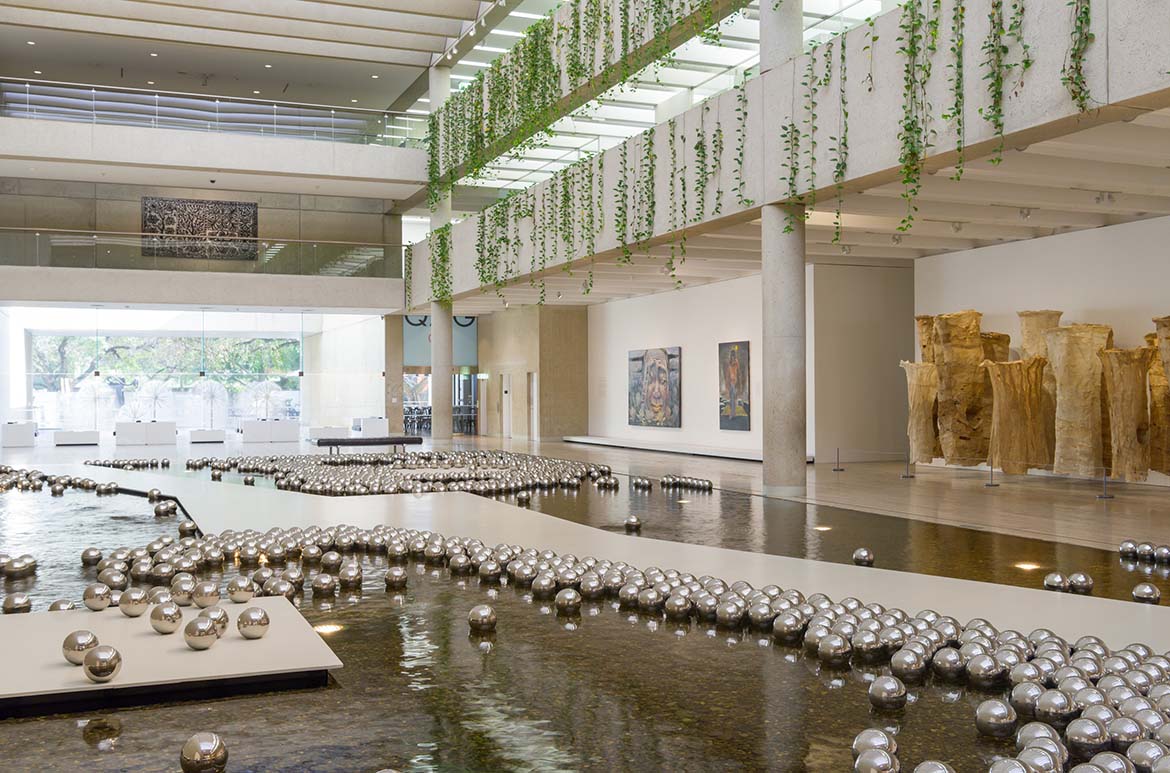
RELATED: Gallery precinct sculpture walk
RELATED: Memorable Watermall projects
The Watermall also extends far beyond the Gallery’s interior; from five cast bronze pelicans by Queensland sculptors Leonard and Kathleen Shillam at the east, to the Dandelion fountains created by innovative fountain designer Robert Woodward to the west, and through to the Gallery’s Sculpture Courtyard reflection pond and waterfall adjoining the QAG Cafe. Enjoy a quiet moment of contemplation, mesmerised by the light dancing on the water while overlooking the sculpture garden’s art works.
QAG Cafe

Sculpture Courtyard reflection pond and waterfall
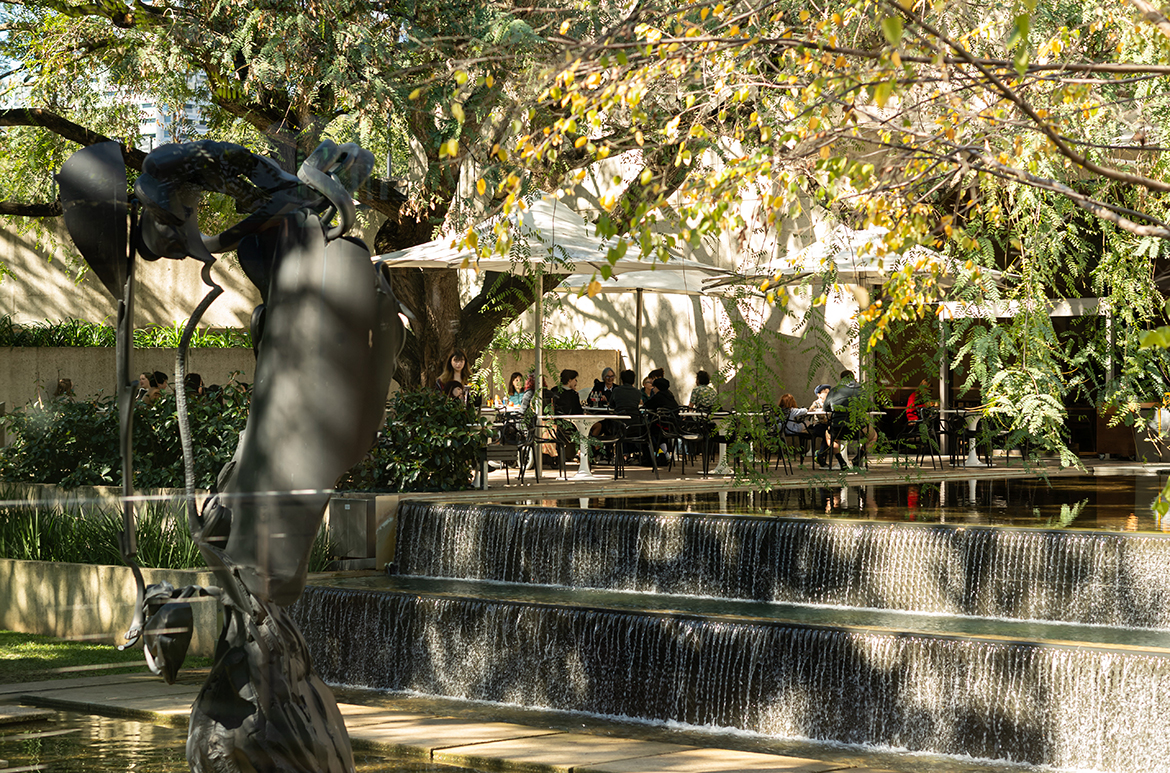
Water Dragons
Keep an eye out for our friendly resident water dragons, Australia’s largest dragon lizard that keep visitors to the QAG Cafe entertained. Native to eastern Australia, they have a life span of around 20 years, though they can grow up to a metre in length, thankfully our plump residents aren’t that big. They are especially adapted to an aquatic life, and if you’re lucky you can watch them dive into the pond from the overhanging Tipuana tree and swim off using their powerful long tail. If you visit in summer, the blooms create a carpet of bright yellow on the water.
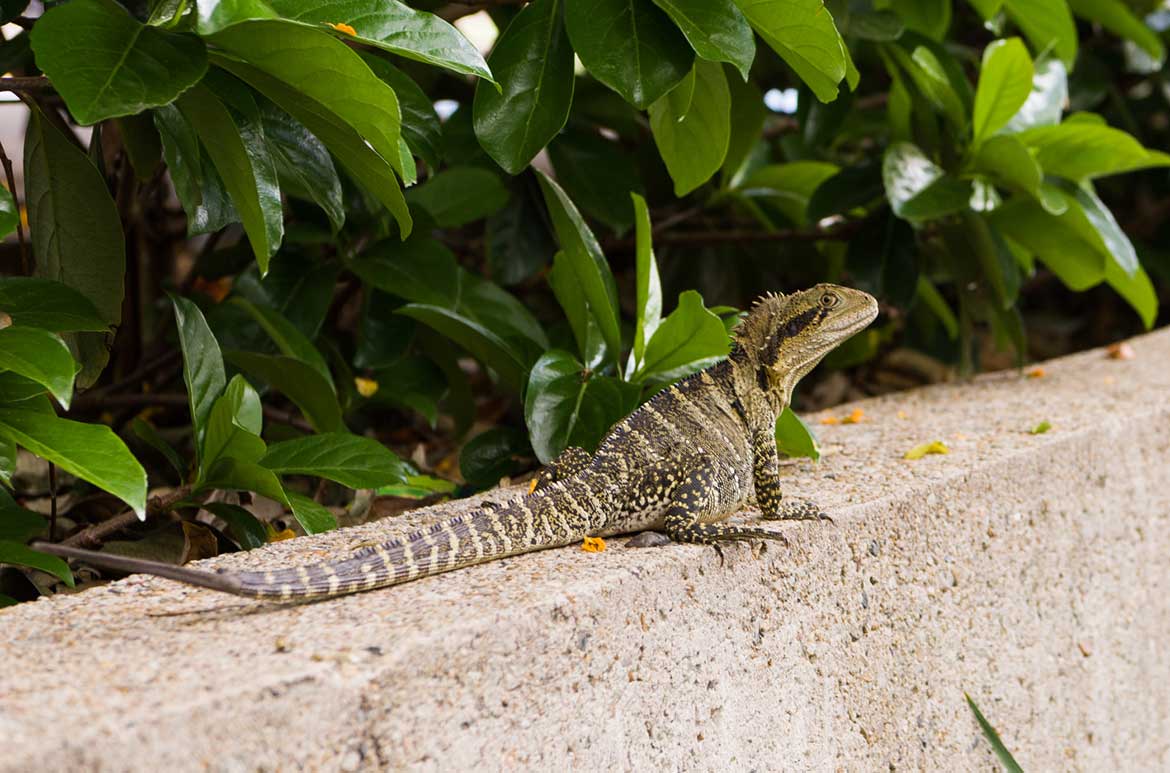
Watermall features
- Pelicans: Five bronze sculptures by Leonard Shillam and Kathleen Shillam in the Watermall, Melbourne Street forecourt and viewable inside from the Pelican Pool Lounge.
- Dandelion Fountains: Nine nozzled spray heads by Robert Woodward in the Watermall, Sculpture Courtyard and viewable inside and from the QAG Cafe.
Leonard Shillam & Kathleen Shillam ‘Pelicans’
Leonard Shillam (1915–2005) and Kathleen Shillam (1916–2002) created life-size statues that relate directly to their observation of nature, their aim to go beyond reality, bonding the physical with the spiritual. Pelicans 1984 are a grouping of five pelicans which patiently sit in the Queensland Art Gallery’s Watermall, the bronzes can be viewed from the Gallery’s Melbourne Street forecourt or more closely observed from within.
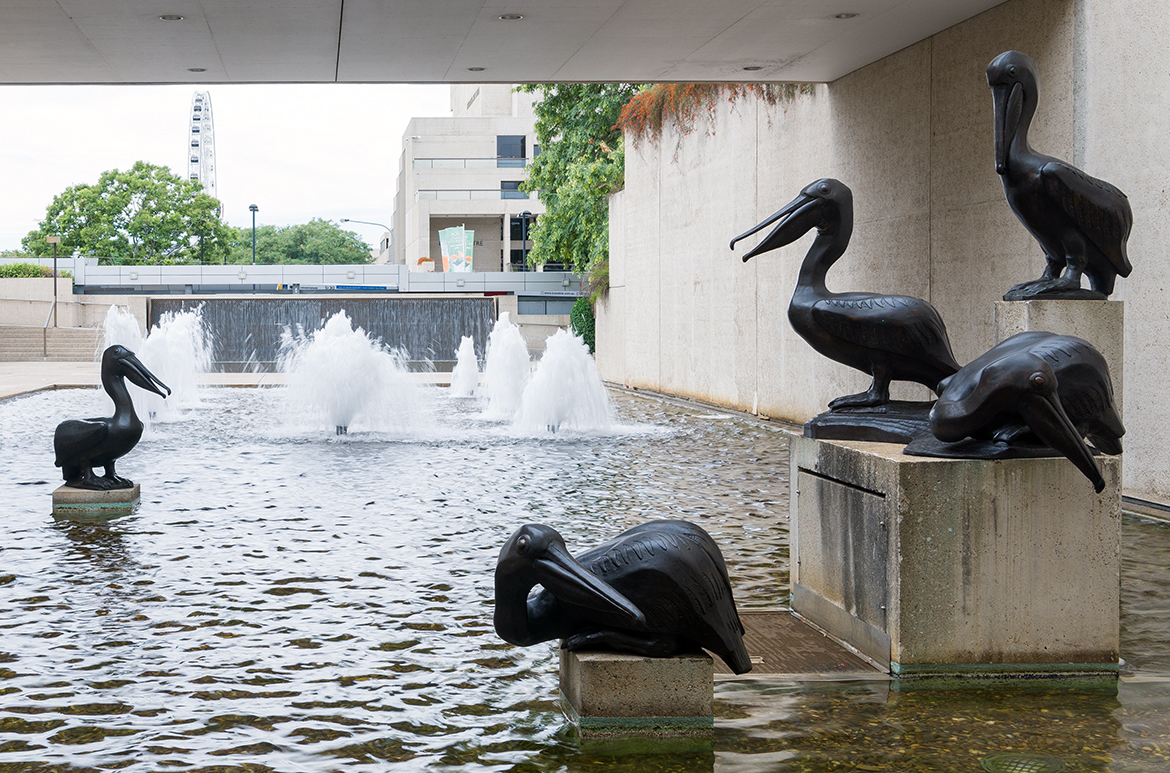
Study for Pelicans
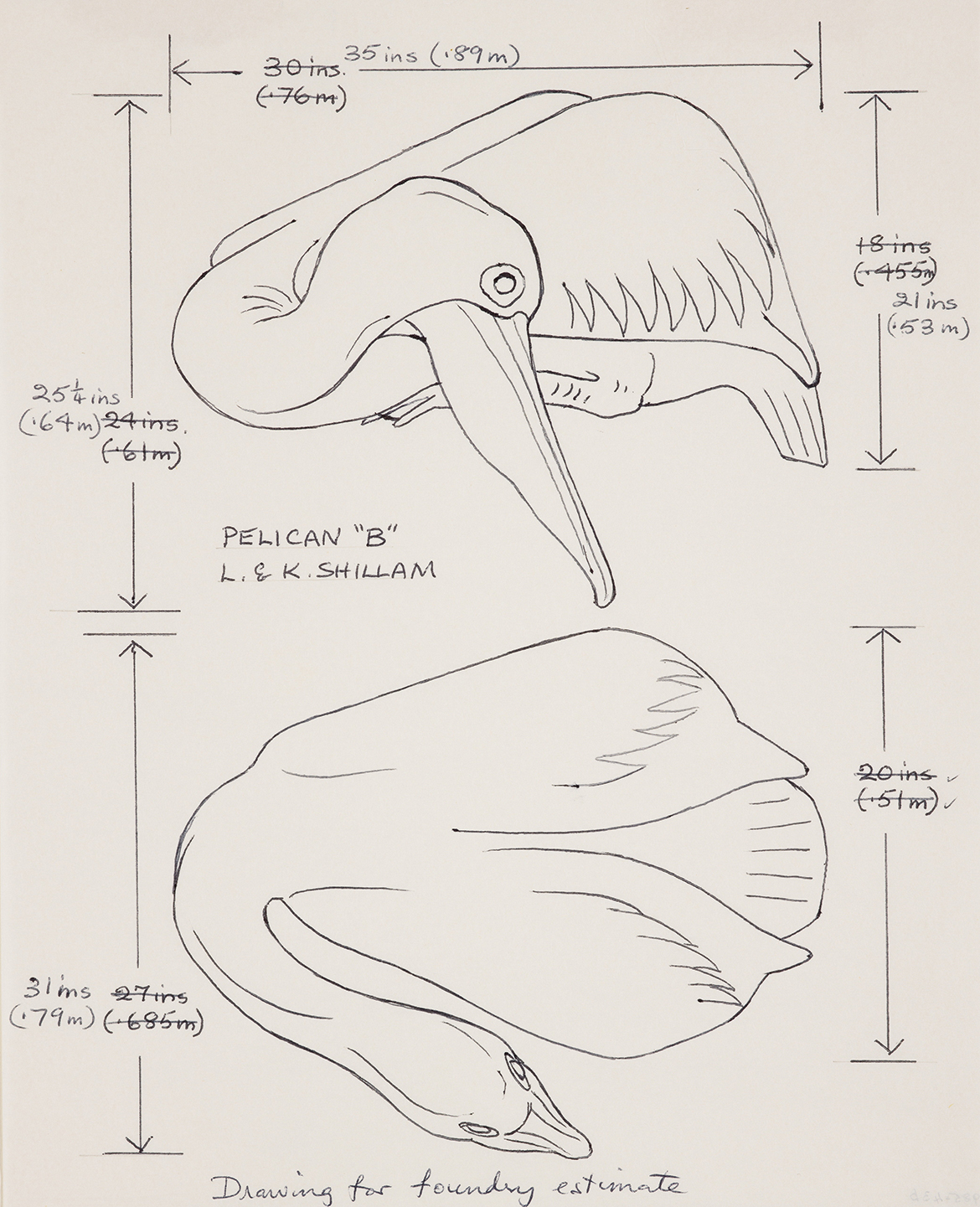
Robert Woodward ‘Dandelion Fountains’
Australian architect Robert Woodward (1923-2010) gained widespread recognition for his innovative fountain designs. Woodward was commissioned to design the water feature at the Performing Arts Complex and a fountain for the Queensland Art Gallery’s Watermall. The Gallery’s dandelion fountains have a connection to Woodward’s El Alamein Memorial Fountain in Fitzroy Gardens at Kings Cross in Sydney, a modernist design which evokes a huge dandelion of water. The Gallery’s grouping of nine smaller sphere-shaped nozzle spray heads are radially arranged on stalks to create the impression of a dandelion, the fine mist of water makes a sphere of water, the spray sensitive to air changes from convex to concave creating an ever-changing movement.


Sculpture Courtyard art works
- L’Age d’airain (The Bronze age): A bronze sculpture by Auguste Rodin in the Upper Sculpture Courtyard
- Bather no. 1: A bronze sculpture by Emilio Greco in the Upper Sculpture Courtyard
- Snowman: An Ice sculpture by Peter Fischli & David Weiss in the Upper Sculpture Courtyard
- Spring awakening: A bronze sculpture by Harold Parker in the Lower Sculpture Courtyard
- Hope sleeping – grand disguise: A steel sculpture by David Wilson in the Lower Sculpture Courtyard
- The Visitation: A bronze sculpture by Jacob Epstein in the Lower Sculpture Courtyard
RELATED: Gallery precinct sculpture walk
Auguste Rodin ‘L’Age d’airain (The Bronze age)’
The Gallery’s Collection includes six works by French sculptor Auguste Rodin (1840–1917) with L’Age d’airain (The Bronze Age) 1876-77, currently installed in the Sculpture Courtyard. The Bronze Age was the first full-scale figure that Rodin exhibited under his own signature and was based on a young Belgian officer, the sculpture took more than 18 months to complete with Rodin recalling that he was in the deepest despair with the figure, and worked so intensively on it, trying to get what he wanted, that there are at least four figures in it. When the work was first exhibited in a Paris Salon, the figure was so lifelike that it was believed it to have been cast from a human body rather than purely sculpted.
DELVE DEEPER: The life and art of Auguste Rodin
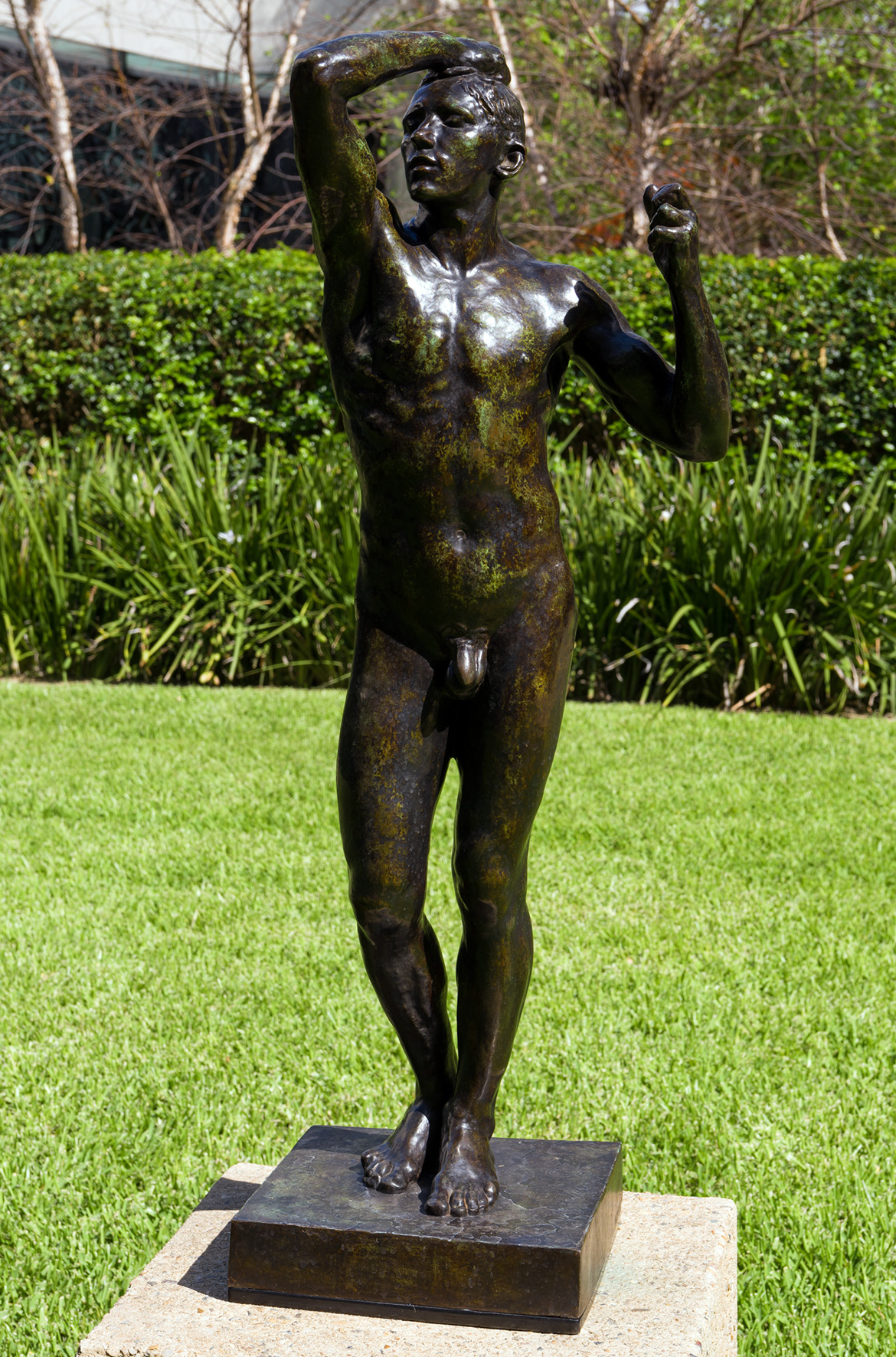
Emilio Greco ‘Bather no.1’
Influenced by Greek and Roman art, Italian sculptor Emilio Greco (1913–95) was a key figure of post-war Italian art. Best known for his classicised portrait busts and monumental bronze figures, he developed his own unique style which tended to be refined, with elongated forms, with a hint of melancholy.
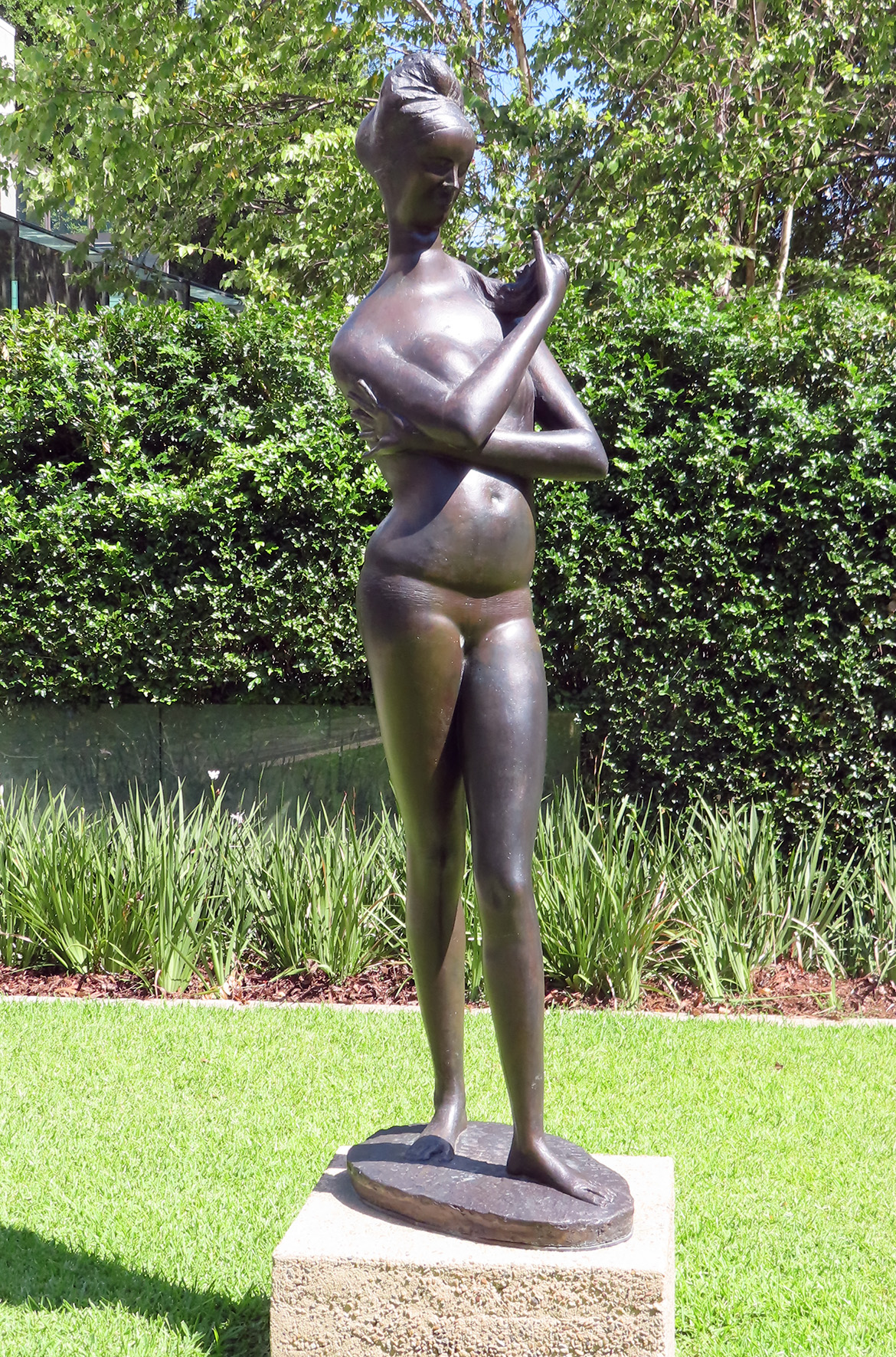
Peter Fischli & David Weiss ‘Snowman’
The life-sized snowman by leading contemporary artists and collaborators Peter Fischli and David Weiss (1946-2012) will be an unexpected sight in Brisbane’s warm weather. The Swiss artists conceived of an artificial snowman that would remain frozen all year round, this version an update of a 1987 site-specific work. The sculpture composed of an actual snowman encased in a glass freezer presents a contradiction by only staying frozen in an artificial home. Its expression will shift over time as the smile and eyes are re-traced by hand every few days, this regular act binds the snowman to us as we care for it far from its snowy origins.
DELVE DEEPER: Snowman makes Brisbane its home
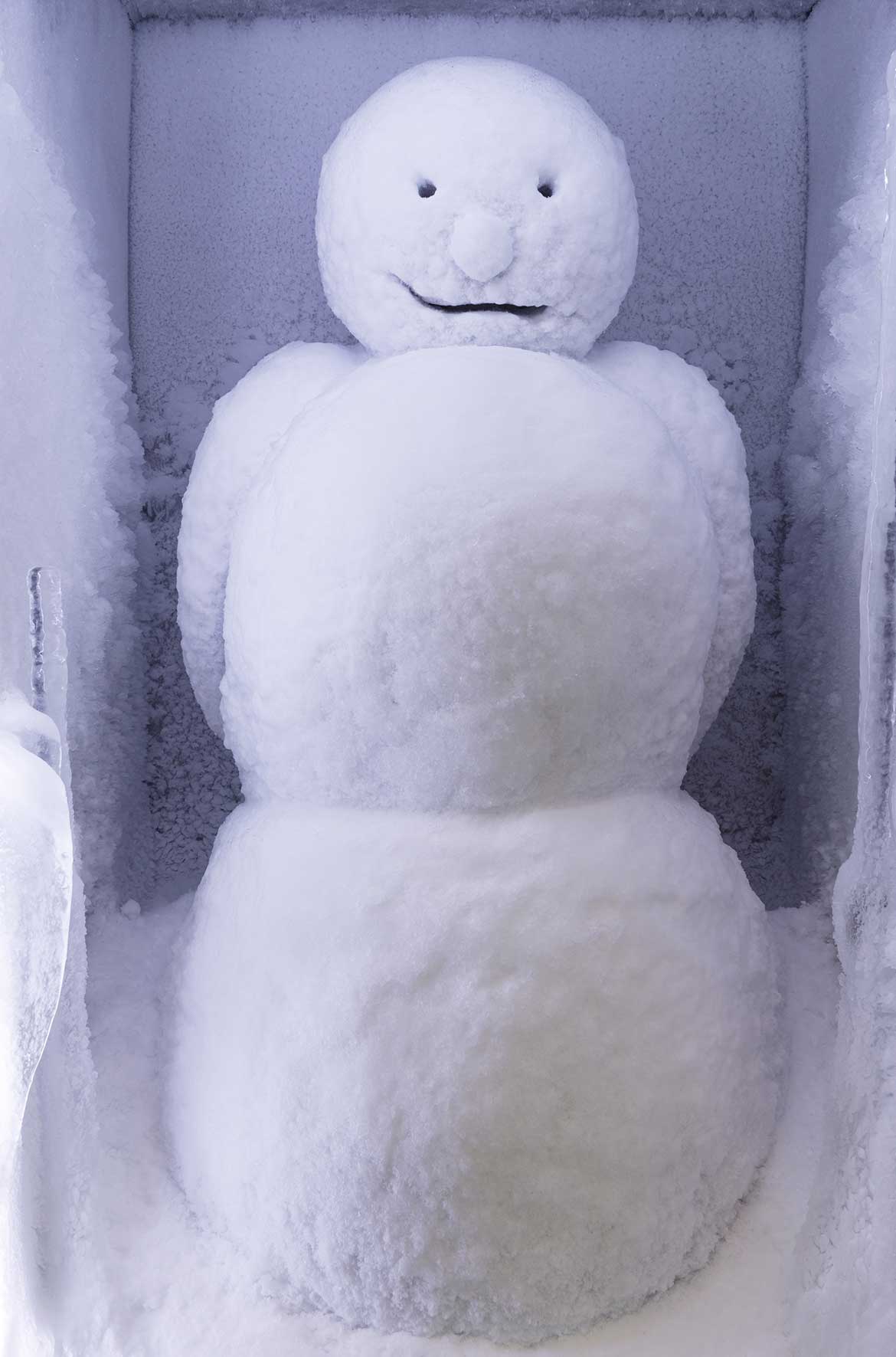
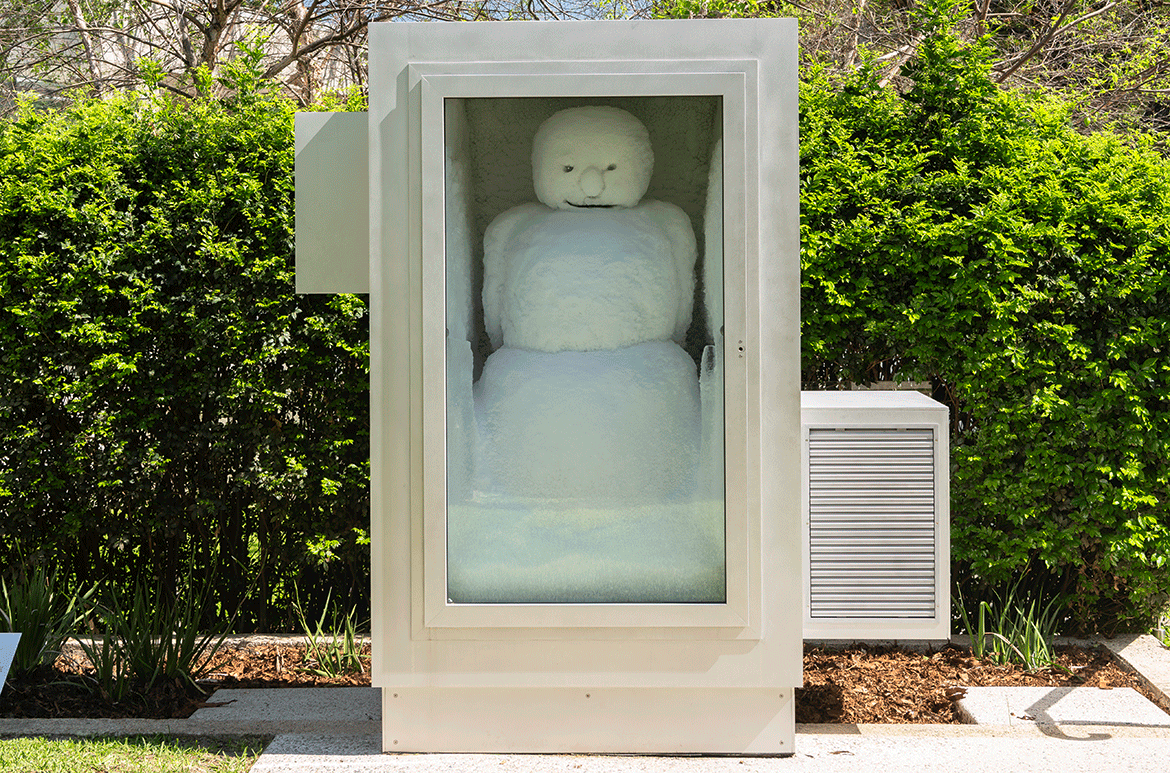
Harold Parker ‘Spring awakening’
Harold Parker (1873-1962) is one of Australia’s most highly regarded sculptors, and one of a small group of Queensland artists with an international reputation during his career. Parker was educated in Brisbane where he studied drawing and modelling at the Brisbane Technical College under Joseph Clarke he also learnt woodcarving and from 1889-95 was a regular prizewinner at Brisbane’s annual National Association exhibitions. In 1896 Parker moved to London where he studied sculpture and developed an interest in the work of French master Rodin, exhibiting in London and Paris before returning to Brisbane to live in 1930. His bronze Spring awakening is a symbolic representation of the season as a young woman, there is a strong suggestion of tension in the way the eyes of Spring are covered by the figure’s hands.
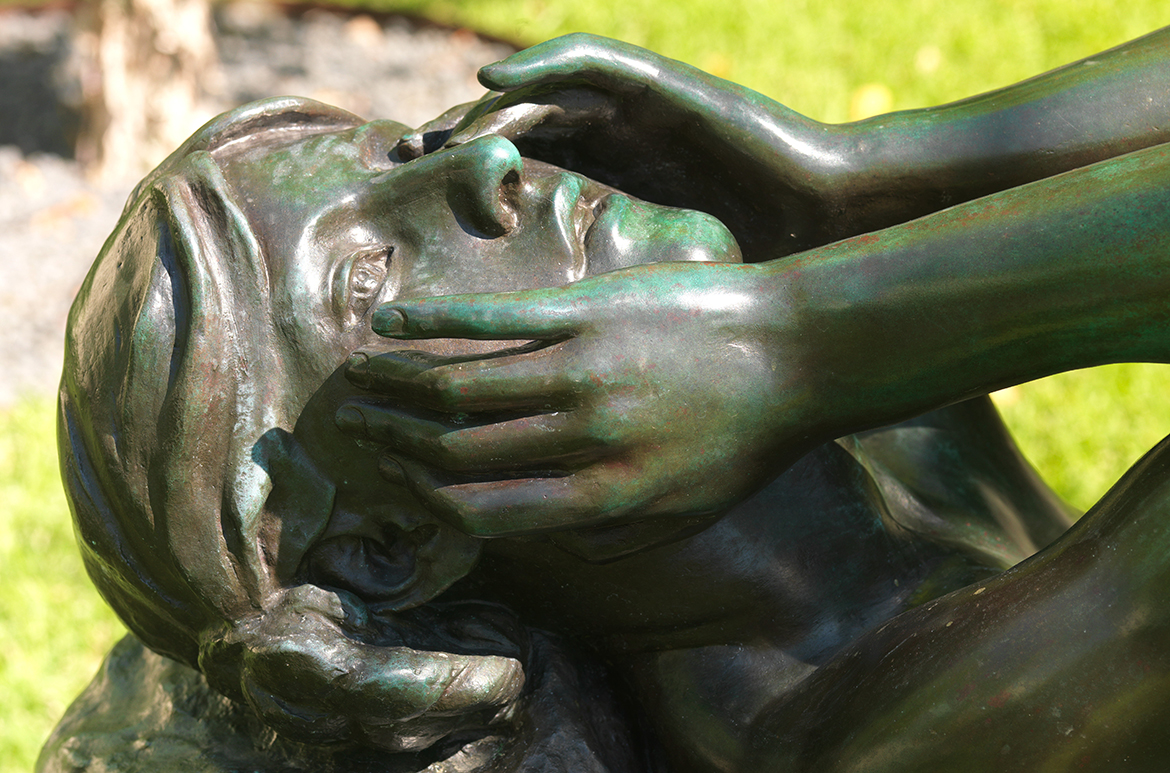
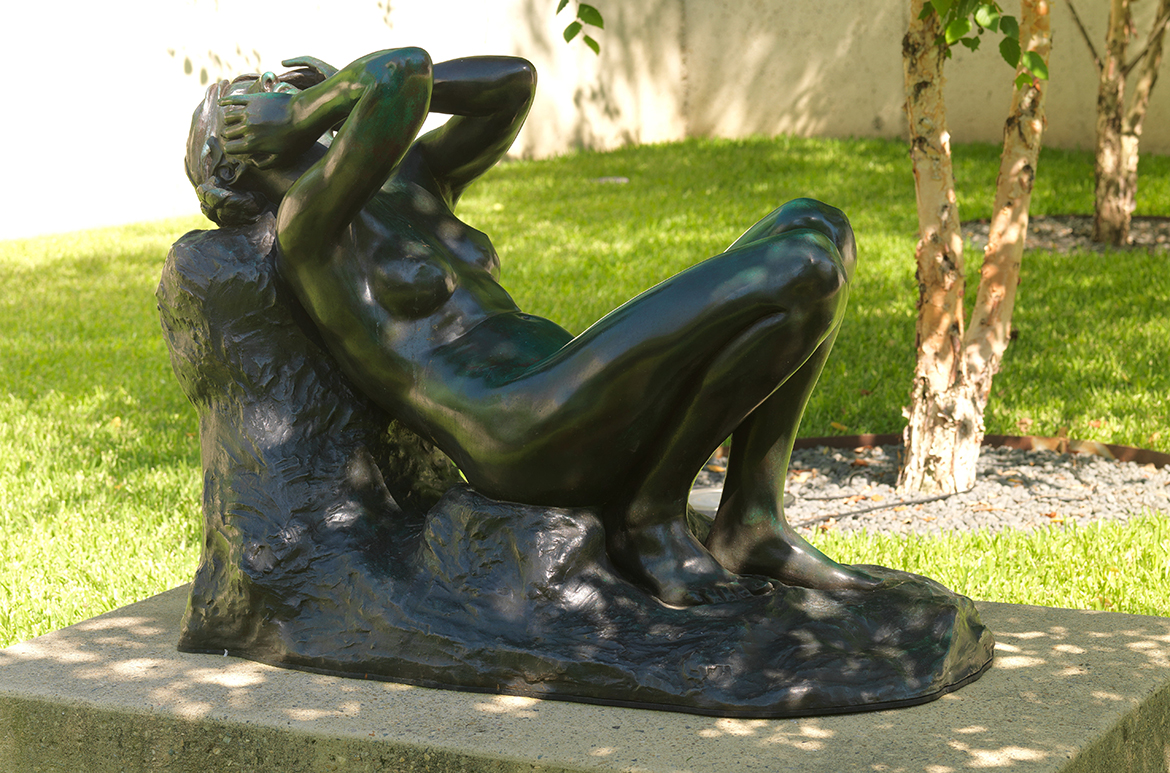
David Wilson ‘Hope sleeping – grand disguise’
David Wilson’s approach to sculpture is probably the most romantic of those Australian sculptors who work in steel, his romantic spirit is allied with the passion he has for steel as a medium. One of the toughest problems faced by a steel sculptor is that the medium is hard and ungiving, rather than use pre-fabricated elements, Wilson makes the un-malleable look malleable, in the same way that we might use clay. Steel is forged, shaped, carved, joined and modelled with blow torch, grinder and hammer, he even creates a sense of texture on steel. Hope Sleeping – Grand Disguise 1989 is a sculpture of considerable physical presence, the work the first on such a large scale by the artist.

Working drawing for ‘Hope sleeping – grand disguise’
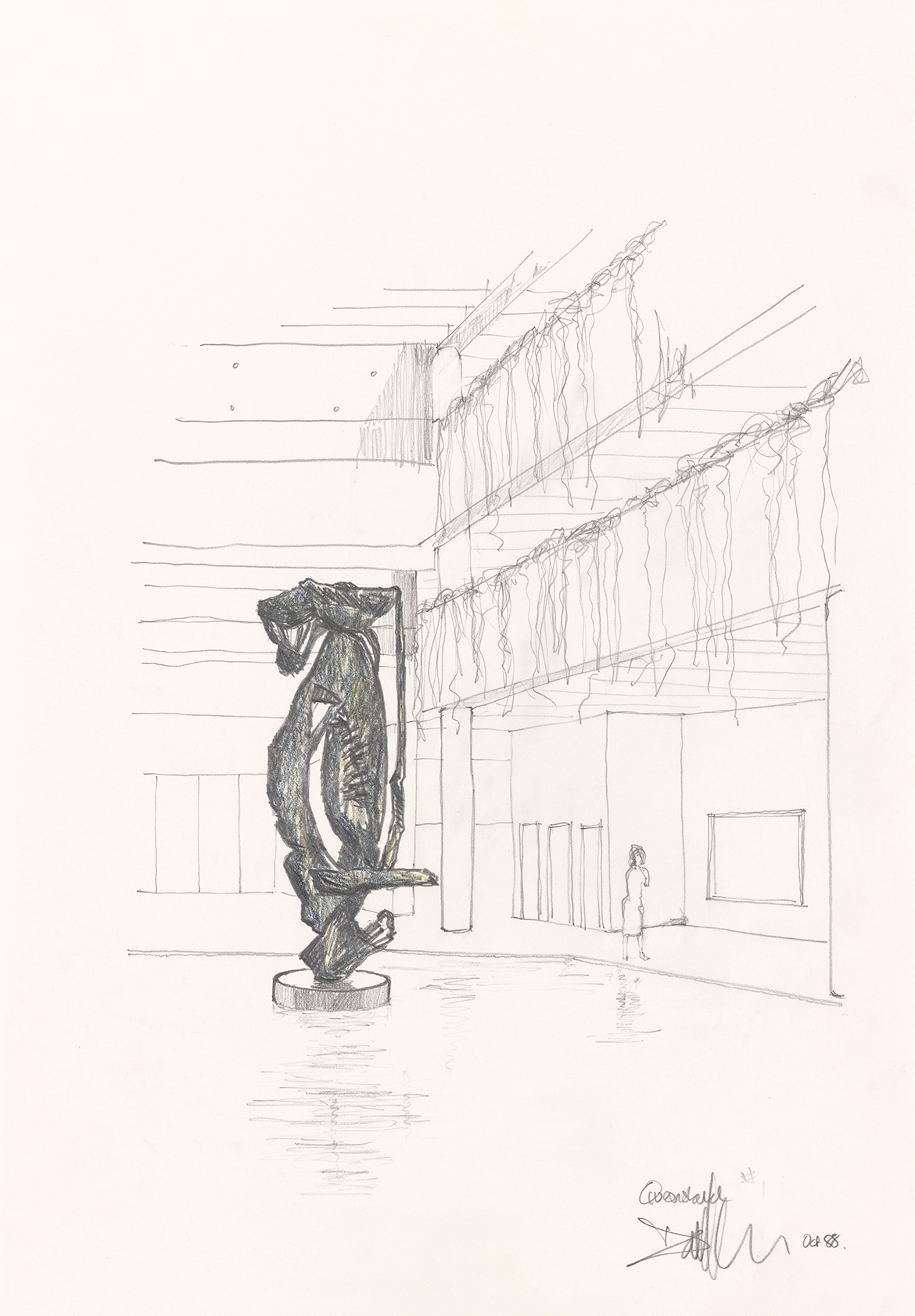
Jacob Epstein ‘The Visitation’
American-British sculptor Jacob Epstein (1880-1959) helped pioneer modern sculpture, often producing controversial works which challenged ideas on what was appropriate subject matter for public artworks with a range of themes including maternity, sexuality, age and religion, his sculpture distinguished by its vigorous rough-hewn realism. The larger-than-life size figure Visitation 1926 looks downward in a moment of reflection and Epstein explained of the work: ‘This figure stands with folded hands, and expresses a humility so profound as to shame the beholder who comes to my sculpture expecting rhetoric or splendour of gesture.’
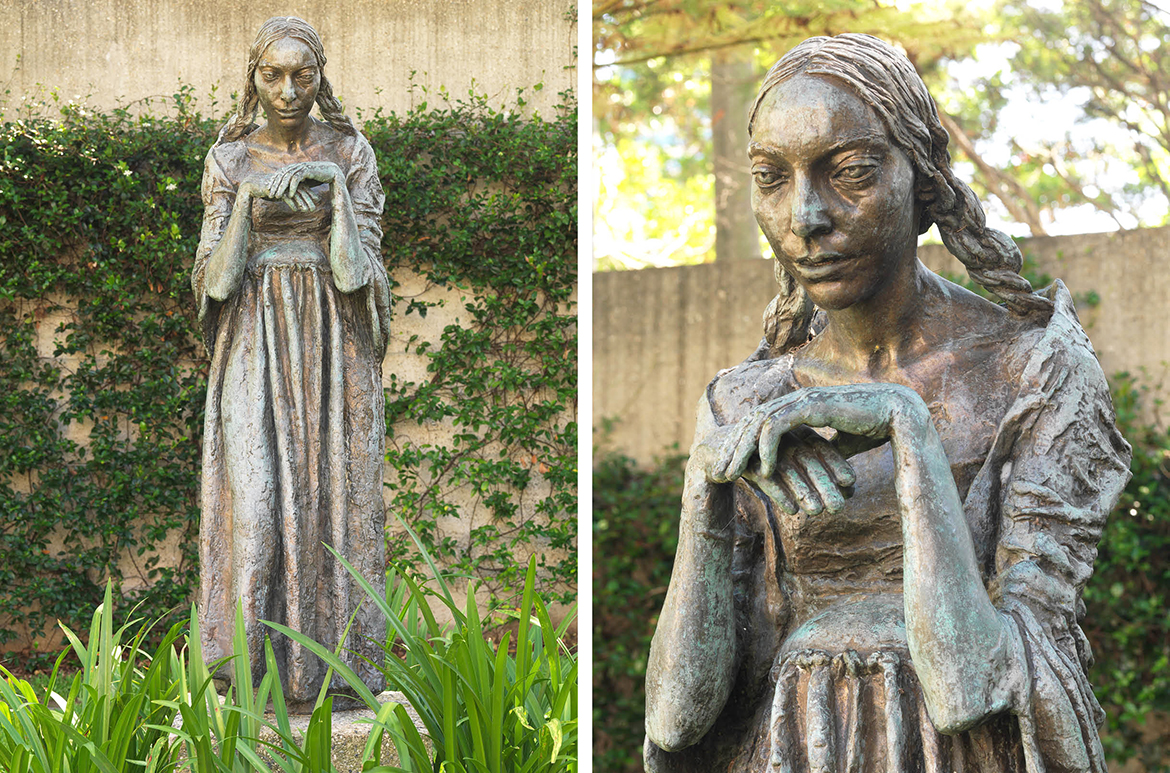
Curatorial extracts, research and supplementary material compiled by Elliott Murray, Senior Digital Marketing Officer, QAGOMA
#QAGOMA

